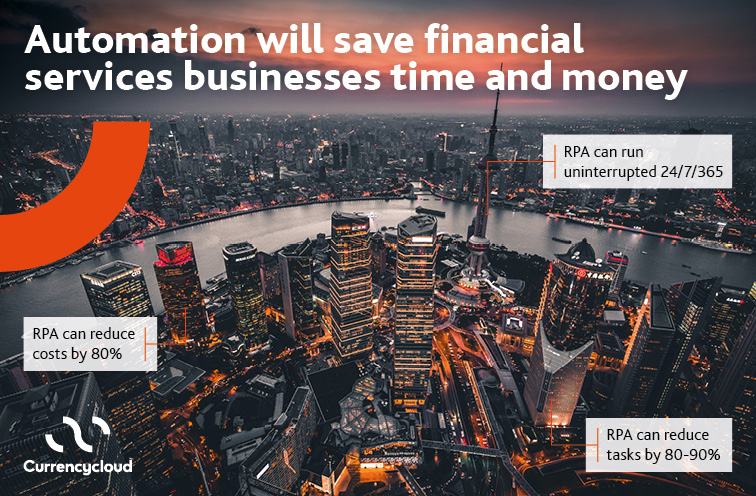Intelligent automation, also known as robotic process automation (RPA), is the latest stage in reducing inefficiencies in manual work. Its roots go way back to the days of the industrial revolution, when machines replaced human work in manufacturing processes like textile and steel production. In today’s digital era, RPA automates repetitive and tedious data-led processes that could previously only be carried out by people.
According to Gartner, RPA creates both efficiencies and cost benefits, observing that: “RPA technology usually costs about one-third of an offshore employee or one-fifth of an onshore employee, and it can work 24/7/365, with no human errors if programmed correctly.”
In fact, everyone benefits from RPA, which learns to replicate actions that take place within a software program. For example, this could be routing an incoming electronic document to the right decision maker, approving a loan, or making a payment from a bank account.
Related articles to read next:
The ABCs of being agile: automation, bots and cloud
Automatic for the people
Consumers and businesses benefit from a more accurate, speedier service when dealing with a financial institution. Meanwhile, employees benefit by carrying out more challenging, higher value work, while employers benefit from a more productive, flexible and scalable workforce.
In turn, this could have a significant impact on the global economy in the future, especially as RPA evolves further into the realm of artificial intelligence (AI). Accenture reports that AI could double annual economic growth rates in 2035 by changing the nature of work and creating a new relationship between humans and machines.

RPA in financial services
Financial services institutions already manage a huge variety of processes that could be better handled through RPA. This is why many are rapidly adopting RPA models that deliver significant returns on investment, particularly in payments.
Any repeatable, rules-based process can be managed by RPA, while processes that require human skills (like empathy, face to face contact and emotional intelligence) can still be better dealt with by humans.
RPA systems can also be programmed to work with OCR to read handwriting and recognize common phrases. This eliminates the need for humans to read incoming documents or enquiries to find out what they relate to. Or they can be used to trawl through huge databases as part of ongoing due diligence or know your customer (KYC) programmes.
Request a demo today:
Click here to find out what Currencycloud can do for your business.
Behind the scenes, RPA processes paperwork that might have taken humans hours or even days to complete. Accenture estimates that RPA in financial services reduces the time to perform tasks by 80-90% and slashes costs by 80%.
The next stage is to collaborate with trusted third parties to leverage their own investment in RPA models for particular processes, such as KYC, FX, and cross-border payments. The advent of open APIs means that it is a simple process for banks to include a trusted and secure third party KYC or payments engine in their platform, rather than building their own from the ground up.
Developers of niche systems for those processes work constantly to reduce friction and improve speed and accuracy, while also making sure that they stay abreast of regulatory compliance across the world.
By harnessing the power of RPA, both internally and via third-party platforms, financial services institutions have the opportunity to significantly improve the service they provide to customers.
New eBook: “Why the future of payments is modular and cloud-based”
Modular, cloud-based payments technology is the way of the future, and the fintech companies that don’t embrace this new payments era will quickly fizzle out.
Our new guide, “Why the future of payments is modular and cloud-based” will tell you everything you need to know about the latest innovations in the payments world.




